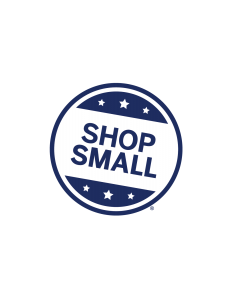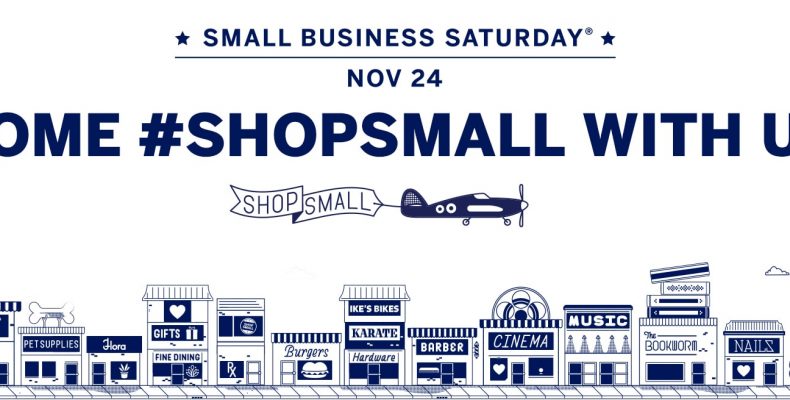Note: we do not receive commissions or referral fees for any of the products or services mentioned in this post.
Today is the eighth annual Small Business Saturday, and in addition to supporting your favorite entrepreneur or corner coffee shop, it’s worth reminding ourselves how much technology has changed the business landscape in a rapid amount of time. When American Express launched the first Small Business Saturday in 2010, Steve Jobs had just unveiled the first iPad a few months earlier, the first Uber ride was still nearly a year away, and Sears had about $10 billion a year more in annual sales than Amazon.
While the demise of retail giants has dominated headlines lately, there’s a trend that has gone largely unnoticed: a lot of savvy small businesses are doing well. Really well. In fact, the National Federation of Independent Businesses’ Small Business Optimism Index hit the highest level ever recorded in September. How is this possible? Weren’t the Internet titans supposed to kill mom and pop operations for good?
As it turns out, the nimbleness and dexterity that comes with being an entrepreneur is a perfect match for the rapid pace of innovation happening today. Conglomerates are too often set in their ways and slow to adapt. This, coupled with the ever-increasing availability and decreasing price of technologies like AI and mobile connectivity, is leveling the playing field and letting small businesses compete with companies hundreds of times their size without sacrificing their defining local character and personal service.
I distinctly remember the first time I saw this trend really taking off at the Bay Area Maker Faire years ago, where, amongst the legions of solo-preneurs selling everything from homemade probiotic tea to hand painted t-shirts to 3-d printed knick-knacks, the only vendor not accepting credit cards was Jamba Juice. While everyone else had a Square and an iPhone, Jamba Juice was using a payment processor that offered only traditional PoS terminals that needed a hard wired connection.
This trend is expanding into all aspects of business, from customer service to fulfillment to marketing. So in honor of Small Business Saturday, here’s five of my favorite ways you can leverage technology to compete with the Fortune 500:
Use AI for a Customer Service Boost
Cost: Free to $10/month
Whether it’s a coffee shop, carpet cleaning service, or beauty salon, most small business owners spend a lot of time answering the same set of questions from potential customers: “What are your hours?”, “Do you have parking?”, and, if you’ve got a physical presence in Long Beach, “Can I bring my dog?”. If you’re living the typical 8-day workweek of a typical entrepreneur, you’re probably finding yourself losing business to competitors simply because you can’t get to every call, text, e-mail, or Facebook message.
Thanks to the power of artificial intelligence, you can respond to all of those queries 24/7 while freeing up time to devote to other aspects of your business.
Microsoft’s QnA Maker Service can turn a series of questions and answers into a fully fledged customer service chat bot in under an hour. Point to an existing FAQ page on the web or quickly throw a word doc together, add a friendly, professional, or snarky personality, and deploy the bot to Facebook Messenger, the web, or another platform to start fielding questions from customers. See it in action below:
You can deploy a simple bot for free, while more advanced or heavily used deployments incur a monthly fee of about $10/month.
Build a Customer Loyalty Program without a Marketing Team
Cost: Result-based
Major retailers and grocery stores figured out decades ago that it’s cheaper to keep existing customers coming back than to bring in new ones, and rolled out loyalty programs and rewards cards to keep shoppers coming back. But while Target and Walmart rely on giant marketing departments and advertising firms, you can build a loyalty program that’s just as effective with virtually no effort and almost no cash.
There’s countless options for doing this today, but if you’re currently using Square for credit card payments, the Square Loyalty program should be at the top of your list for it’s easy integration with existing tools, user-friendliness, and results-oriented pricing model. It’s dead-simple for customers to sign up (I’ve signed up for Square loyalty programs without even realizing it), and the tie-in with Square’s other services give business owners a wealth of useful information and tools. Pricing is based on the number of customer visits the loyalty program generates, meaning you’ll pay little to nothing if the program doesn’t work.
Find Out When and Where Your Customers Are Using Wi-Fi
Cost: Free to $150+ a month

How much foot traffic do you get on a Friday night vs a Thursday? Are you understaffed during the morning rush but pouring unnecessary resources into labor during an afternoon lull? What kind of impact does a window or sidewalk display have on getting passersby into your storefront?
These questions used to be incredibly difficult for small businesses to answer, requiring time, expertise, and resources that entrepreneurs simply didn’t have. But with the ubiquity of smart phones and other mobile devices comes an opportunity to almost effortlessly gather these insights and more. By detecting and analyzing the wireless signals these devices put out, you can capture metrics like foot traffic, dwell times, conversion rates, and more. Think of it as Google Analytics for the physical world.
There’s now a wide number of solutions for doing this, and after years of use by major retailers, competition has driven the price down to the point where it’s affordable for everyone. Because these solutions area analyzing use standard Wi-Fi signals, customers don’t need to do anything, and businesses can often use their existing Wi-Fi infrastructure. Major vendors like Cisco Meraki and Ruckus offer location services with a subscription or as a cheap upgrade option. Third party services like Purple.ai offer free service tiers for small to medium businesses.
Book More Appointments and Reduce No-Shows with an Online Booking Service
Cost: Free to $200+ a month
If you have any kind of service-oriented business, you should be giving customers a way to book online, via text, or through social media platforms. Fewer and fewer customer interactions are taking place over the phone, and adding online appointment booking can help you capture business that would otherwise go to a competitor. By some measures, the majority of appointments are already booked online.
There’s a ton of online scheduling and booking tools out there, but they pretty much all provide two huge benfits for small businesses of all types: First, unlike a traditional receptionist they are available to customers 24/7 and can serve a virtually unlimited number of people at once. Second, virtually all of them offer some kind of reminder option to help reduce costly no-shows.
Microsoft started including a free booking tool in its Office 365 Business plans offering last year, and it integrates with Outlook to make keeping track of your schedule just as painless as the customer’s booking process. Square Appointments is available free to sole proprietors and starting from $50/month for larger businesses. A number of other services target specific industries: MindBody for fitness/wellness oriented businesses, Shedul for Salons and Spas, and Thryv for businesses offering classes or group events. Restaurants have an increasing number of options for taking and managing reservations, as startups like Resy and Tock seek to dethrone the incumbent OpenTable.
Expand Globally Without Giving Up That Charming Storefront
Cost: Varies
The same big-box stores that put so many small brick-and-mortars out of business are now racing to match the online experience of Amazon. But with the rise of e-commerce platforms like micro-sized businesses can offer an experience that often exceeds that of the old-school retail monsters. Services like Shopify and Etsy have built up a customer base spanning thousands of small sellers by continually innovating and refining the shopping experience. For a monthly fee starting at $29/month, Shopify merchants can offer customers around the world cutting edge features the big names can’t match, including Apple Pay and Instagram integration, sales directly via Facebook Messenger, and more. Even Amazon itself now gives small businesses the opportunity to match or beat the convenience factor of bigger competitors. For a portion of sales, sellers can stock goods in Amazon’s fulfillment center and piggy-back off the world’s most advanced logistics network. Consumers no longer have to choose between the convenience of big-box and
For restaurants, coffee shops, and bakeries, it’s never been simpler to expand revenue through delivery options. Services like GrubHub, Postmates, and UberEats are tripping all over each other to partner with local eateries and expand their offerings to customers.
No matter what you sell, there’s no longer any excuse not to be selling online.
Bonus: Participate in Small Business Saturday
Cost: Free

Regardless of whether or not you actually accept Amex cards, American Express provides small business with free marketing materials and ideas to help you bring in some of the $85 billion in sales that today’s Small Biz Saturday is expected to net. Advertise to Social Media, print a flyer, or get some inspiration for a last-minute event. And don’t forget to support your fellow entrepreneurs!
If you’d like help implementing any of the ideas mentioned in this post, or are interested in learning about other ways technology can help your business, don’t hesitate to Contact Us!
